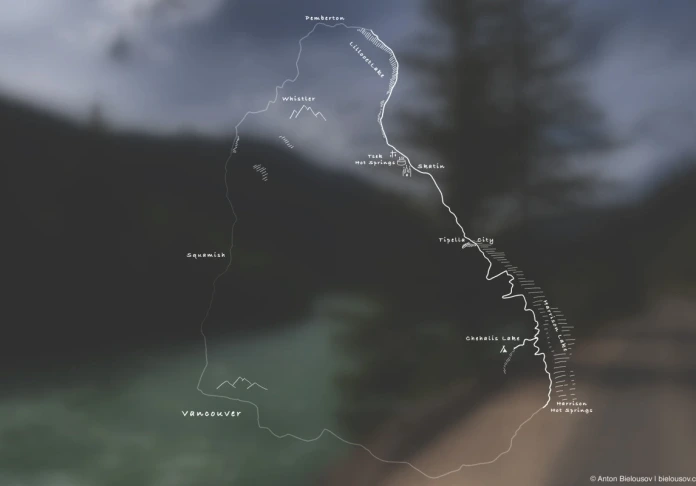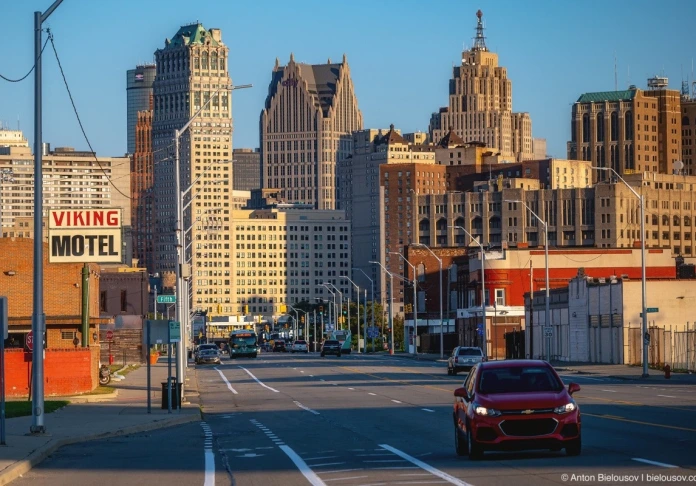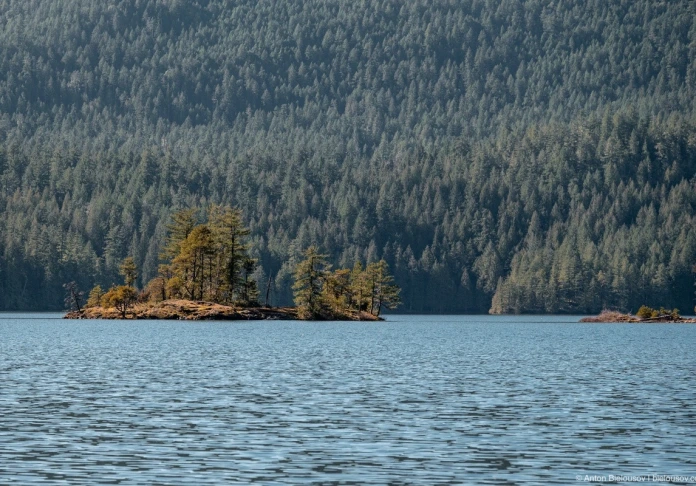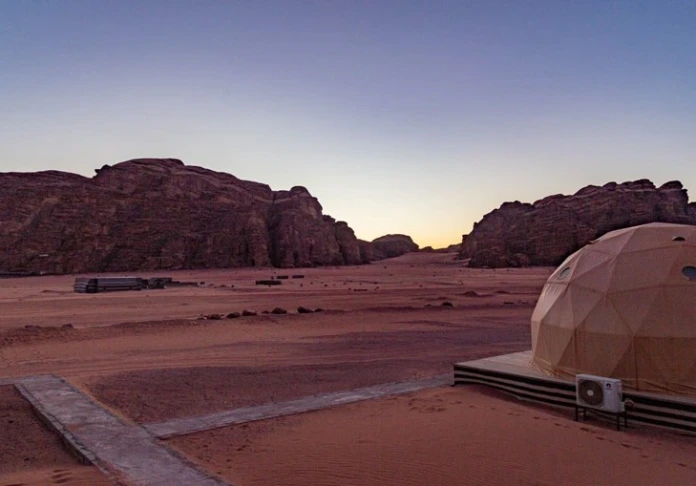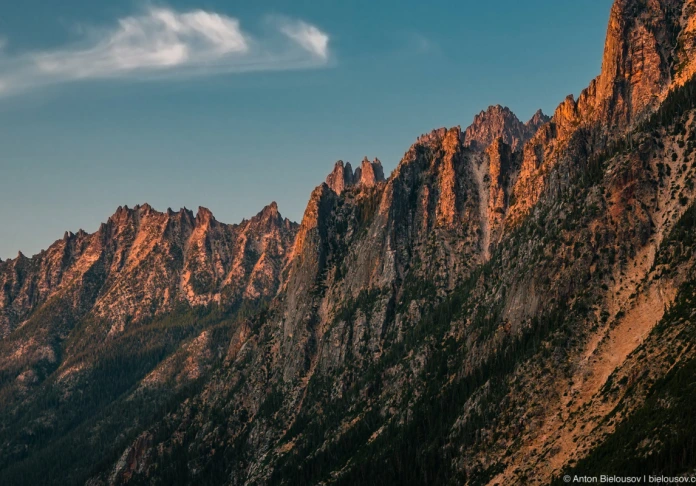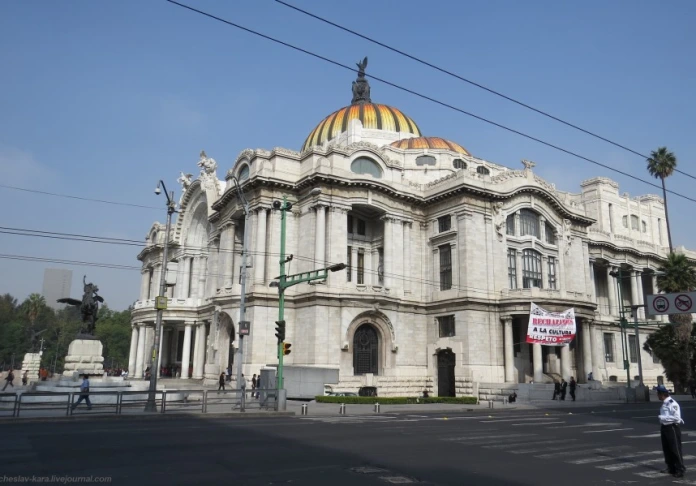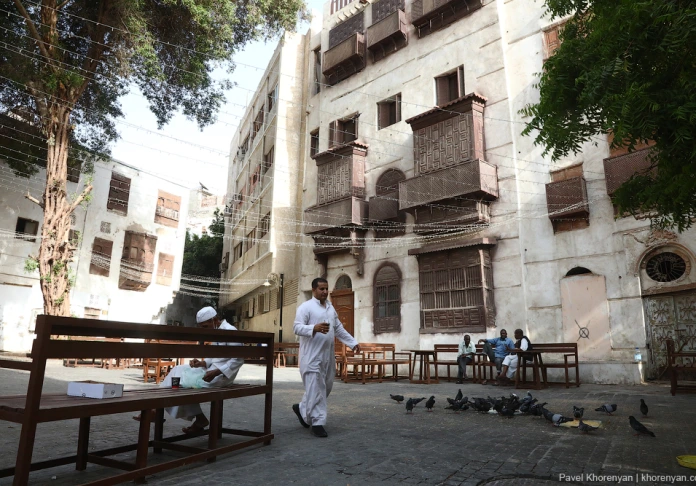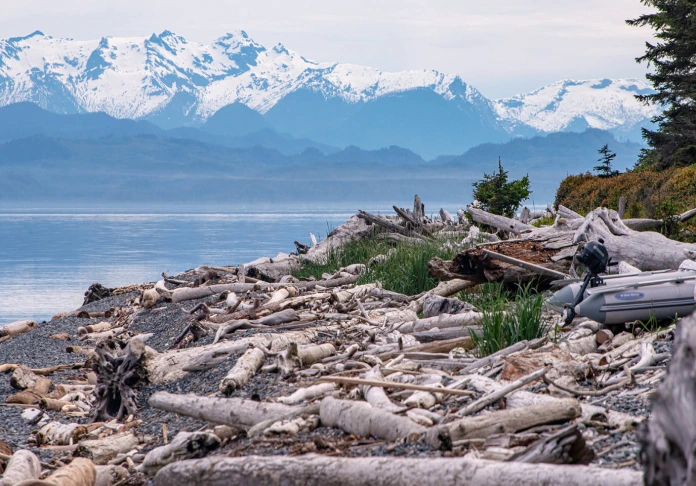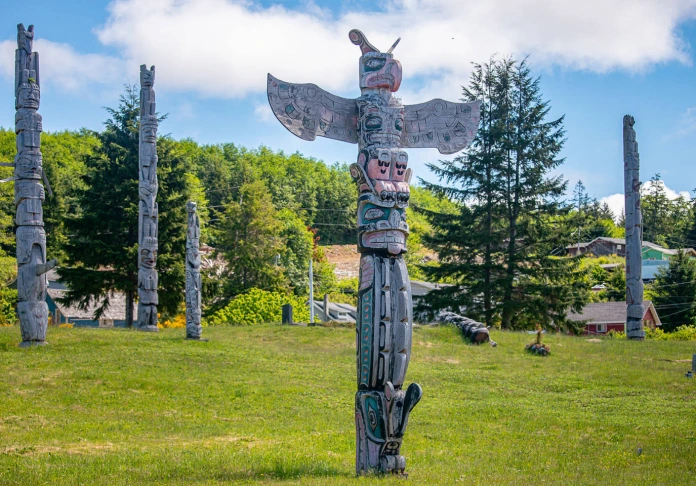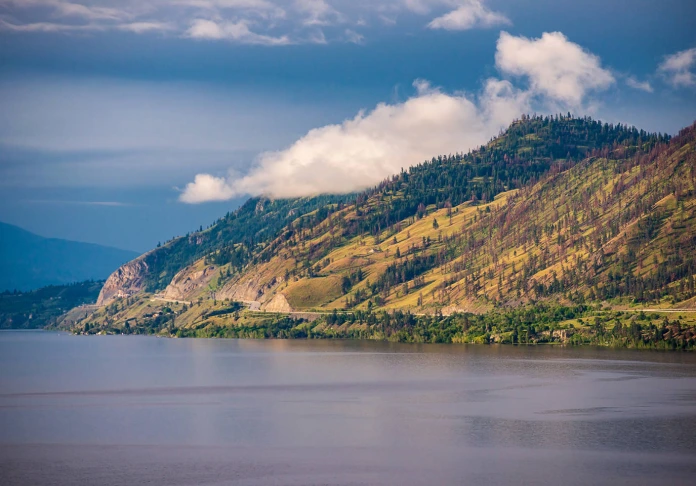Bologna
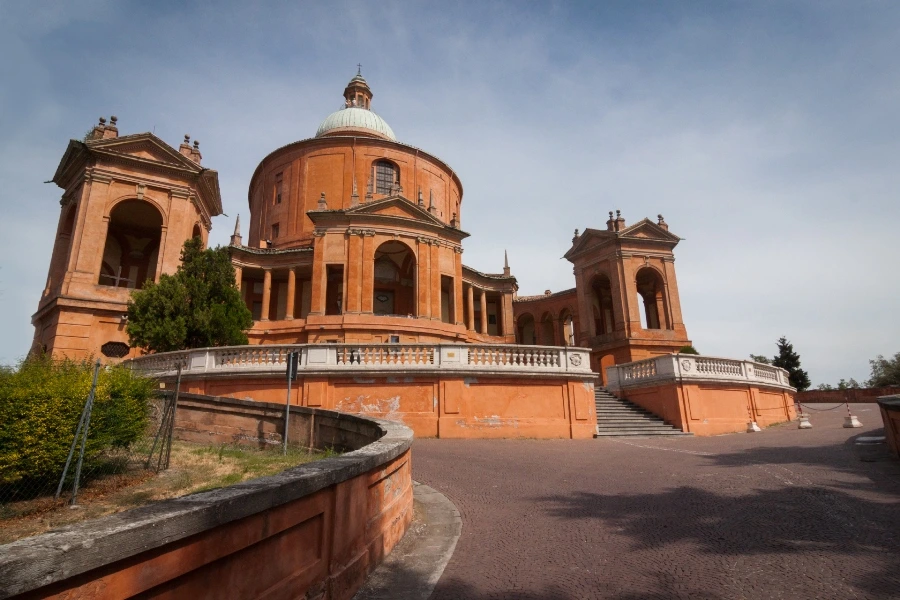
Bologna - the most controversial of all the Italian cities I have ever seen. Beautiful here is hiding the fact that at first glance it is difficult to be called beautiful, but can be unattractive that was created for entirely different purposes. Going beyond the historical center, you find yourself in another city, or rather, a hundred other cities, as each new quarter recalls different parts of Italy. All this, of course, my subjective opinion.
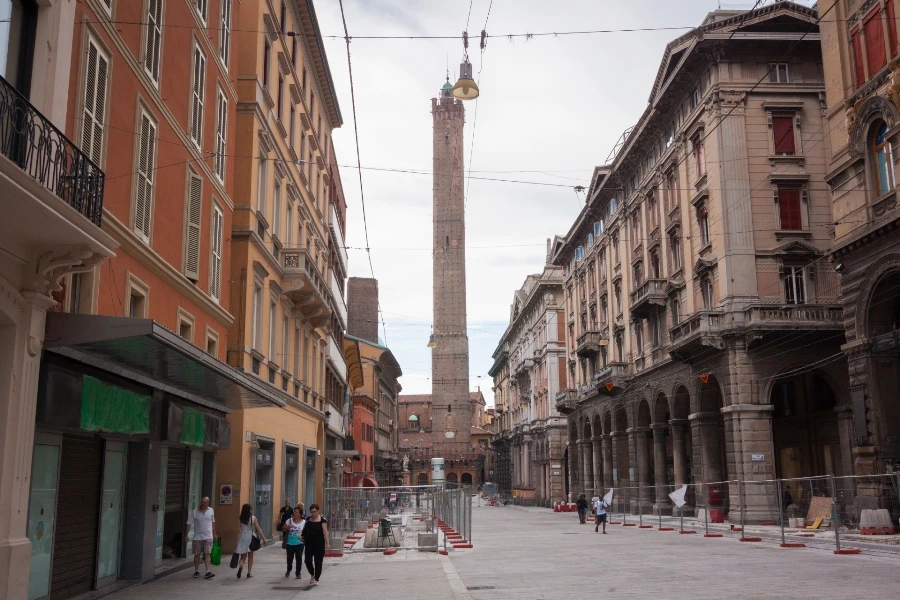
1. The capital of the Emilia-Romagna region I come early in the morning by train from Florence. I must say that you can get to Bologna on the train and on the bus. The first half hour is the second - 2 hours, but the bus comes much cheaper. His way I start with a main street - Via Rizzoli.
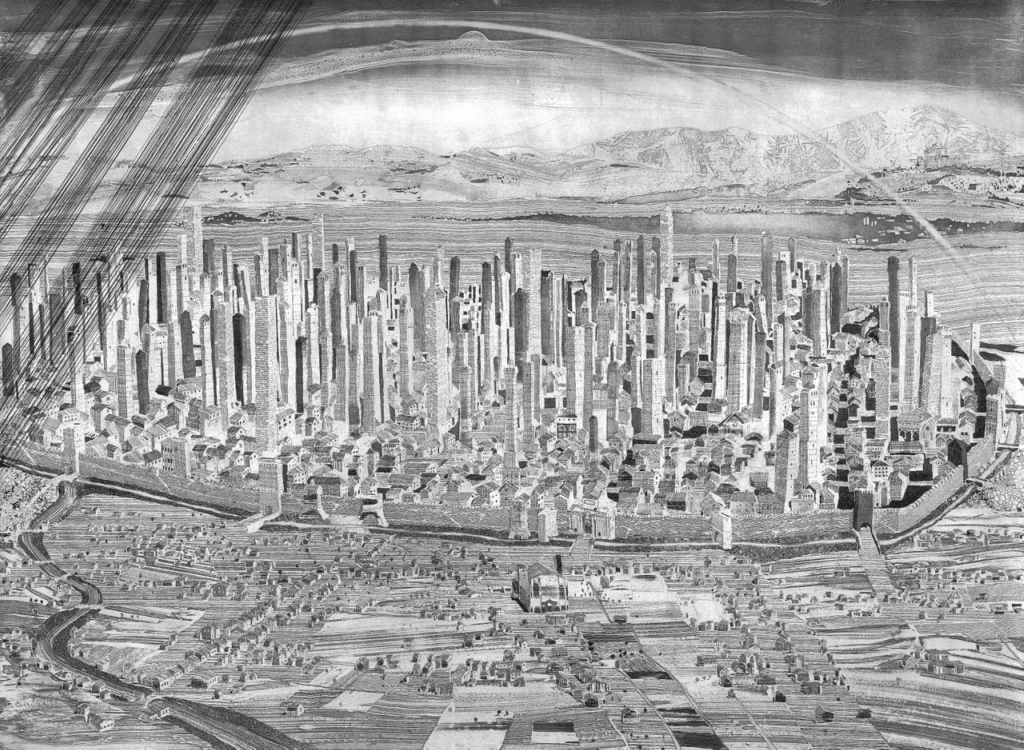
Medieval Bologna, as well as other Italian cities, was like a stockade of the numerous towers. Local rich built them for protection, but also to show how they are superior to others. In all senses.
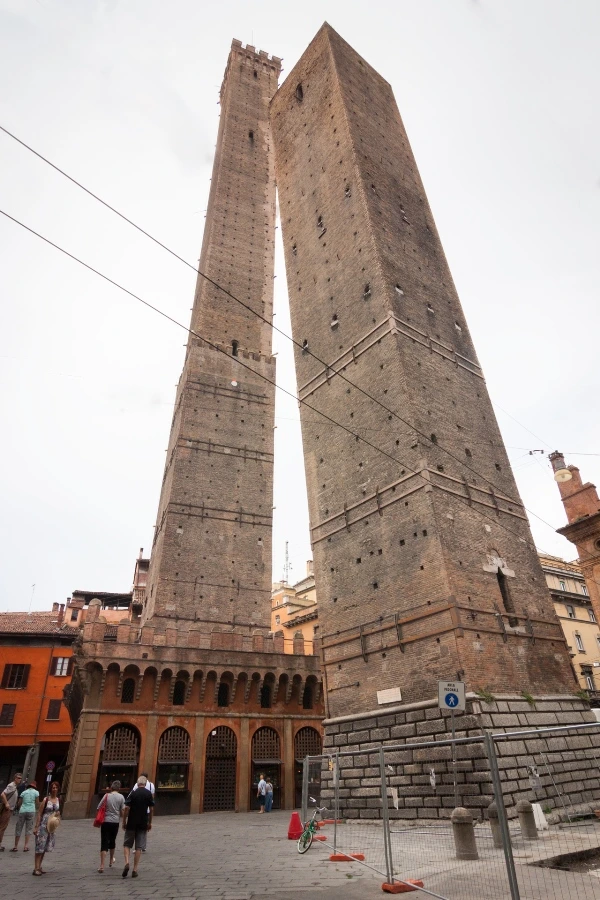
2. Over time, the tower went out of fashion and out of 100 "skyscrapers" left 24. The most famous - the 97-meter tower Asinelli (Asinelli) and 47-meter tower Garisenda (Garisenda) - are now the symbol of the city and as instituted in Italy steadily falling. (In the photo effect is enhanced because of the wide-angle lens). Two medieval buildings produce a strange impression: there is in these rough and lacking any finesse towers is something that catches the eye and makes even admire the height and power of the two "stone Sister."
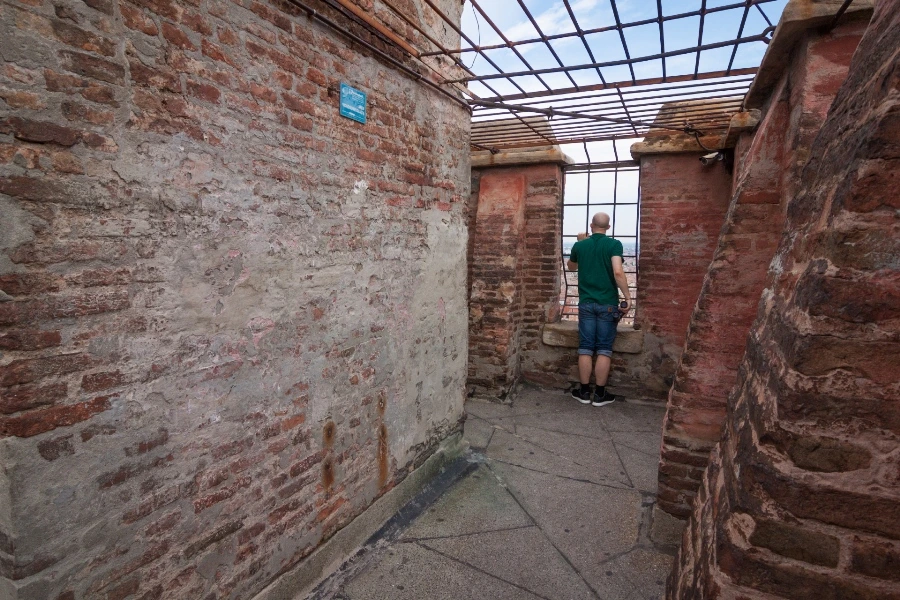
3. Of course, my joy would not be complete without holding I Azinelli tower - the highest of the falling towers of Italy. Lifting consists of 498 wooden steps that visitors to the city have polished their feet, as if the sea - rocks on the shore.
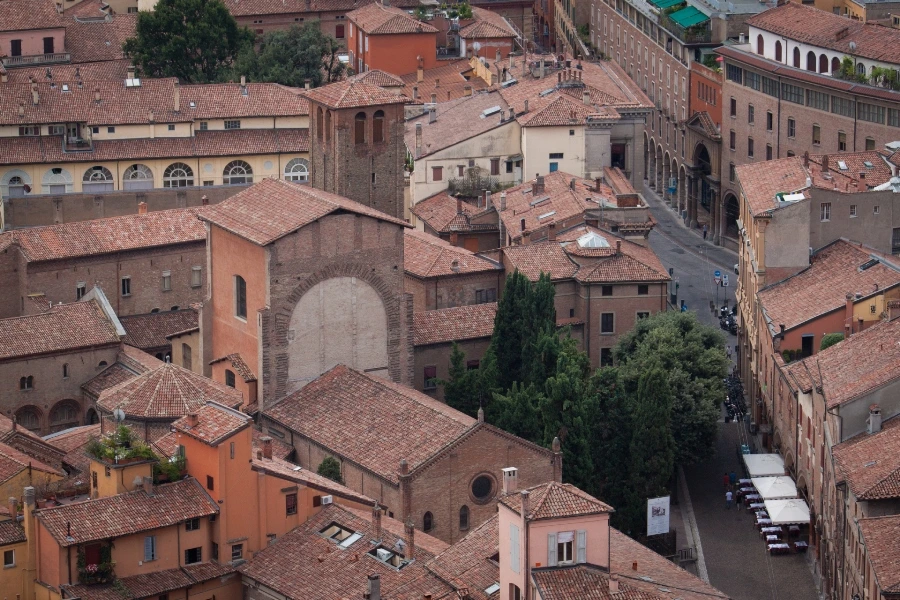
4. However, the view from the observation deck at the top is worth the effort. Hence, it becomes clear why Bologna was nicknamed the "red" - as opposed to Florence, palazzo which was built of yellow stone, is dominated by red.
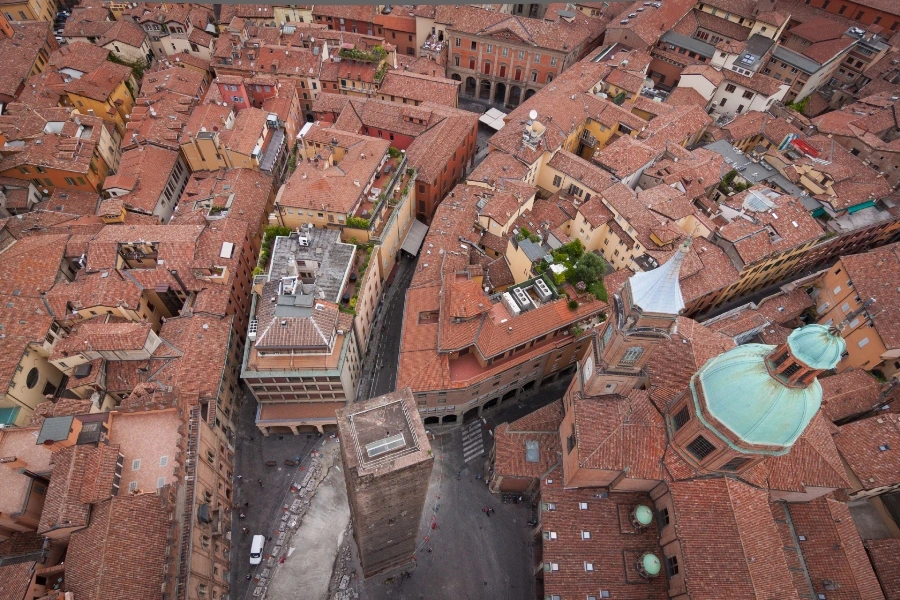
5. At the bottom is visible younger sister of our towers. Initially neighboring Garizenda was higher, but with the time of the dismantled buildings, fearing collapse. Because of the strong inclination Garizenda Now no one is allowed.
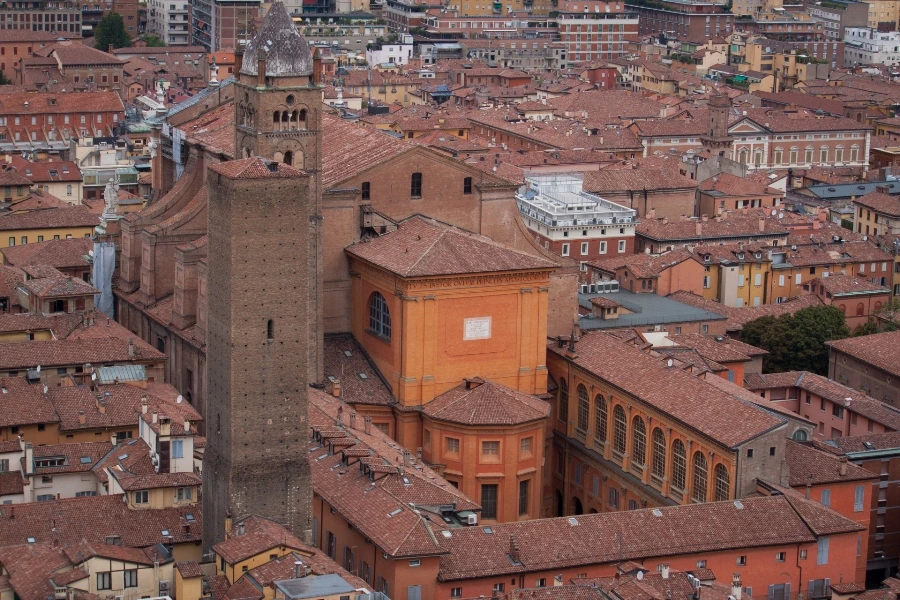
6. In the foreground - Prendiparte Tower (Torre Prendiparte). Once there was a prison for the heretics, but now people live in the tower, however, in the best conditions - are opened B & B.
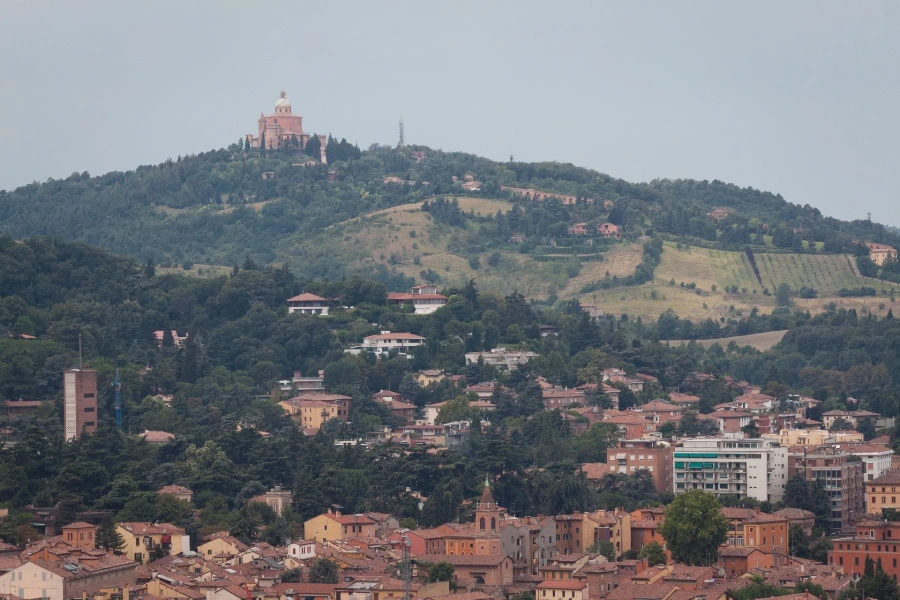
7. Not to go downstairs, I was scheduled to see that even in Bologna - the Church of the Madonna di San Luca (Madonna di San Luca), or simply San Luca. That she could be seen on the mountain. To the church, located outside of Bologna, the city is covered gallery, which is also visible in the picture, if you look closely.
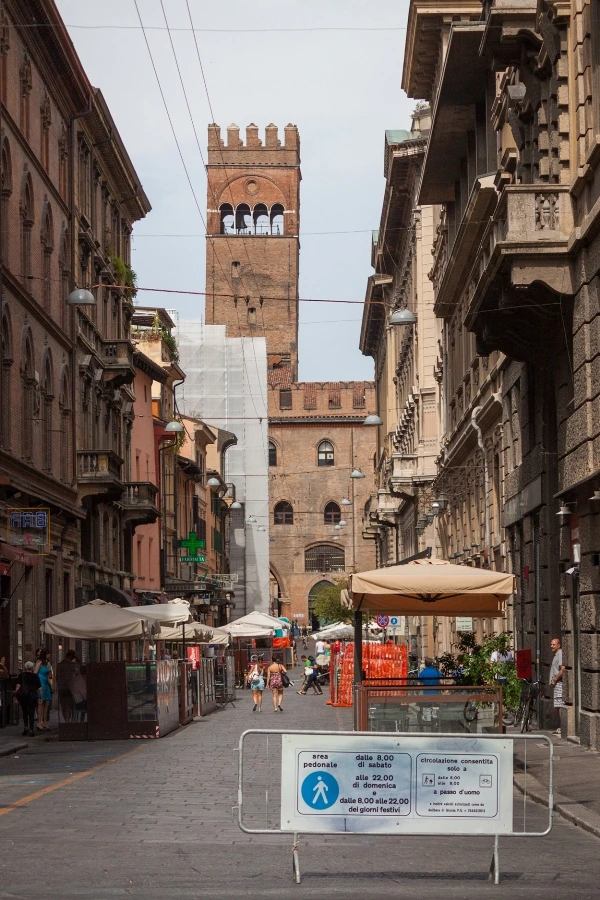
8. However, it is time to land.
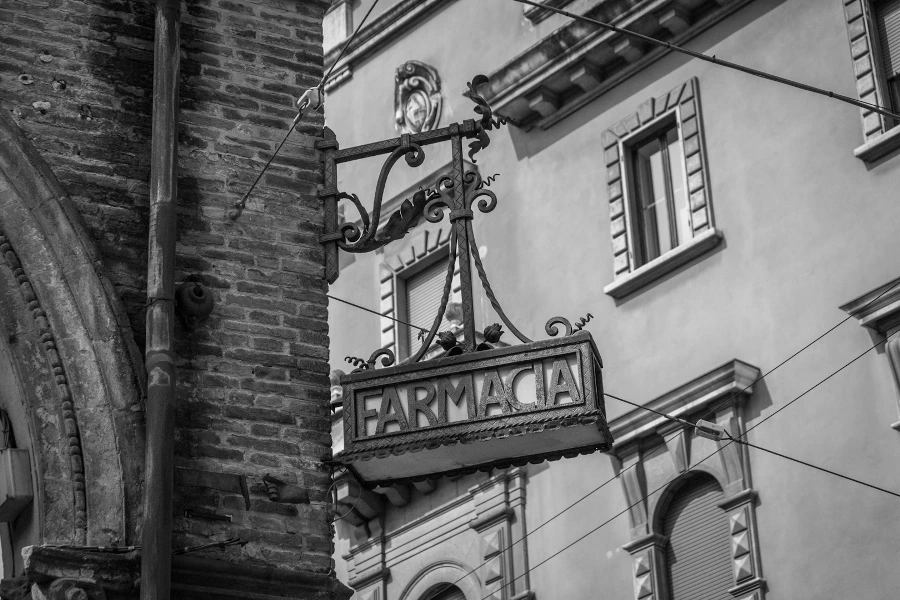
9. Nearby there is a pharmacy for those who have mastered the difficult ascent and descent of the tower Asinelli.
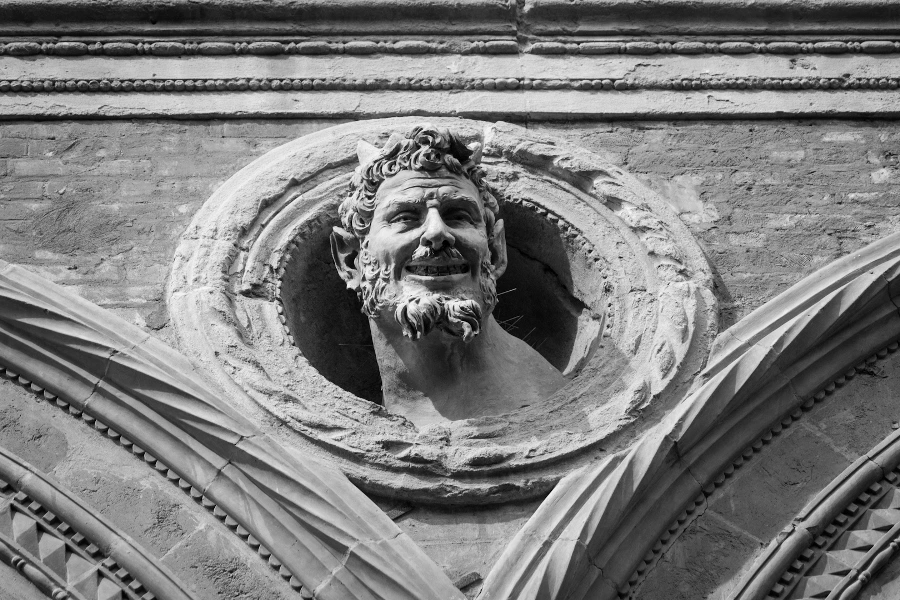
10. The sculptural decoration of the house. Cute.
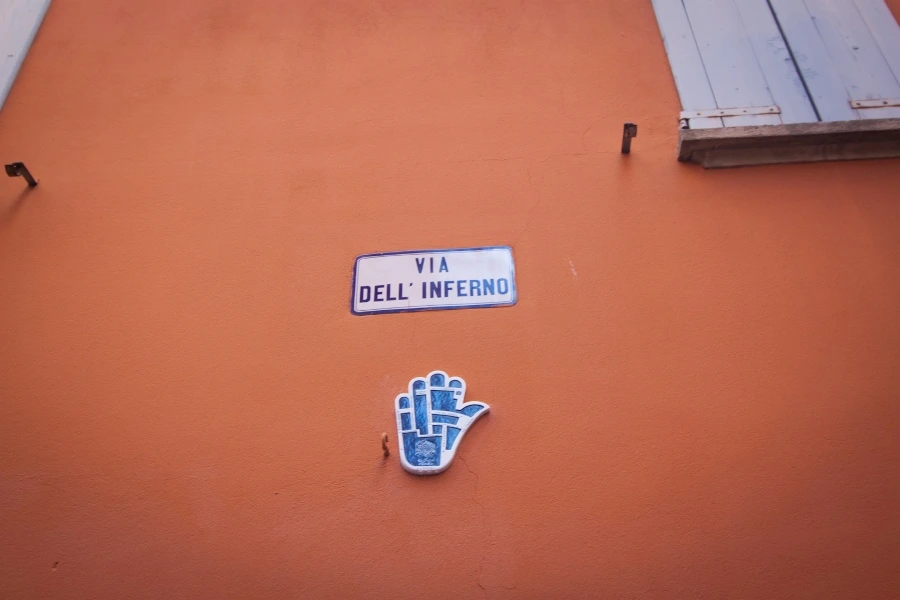
11. Via dell'Inferno - Hell Street. According to one version, named so because of the poor lighting.
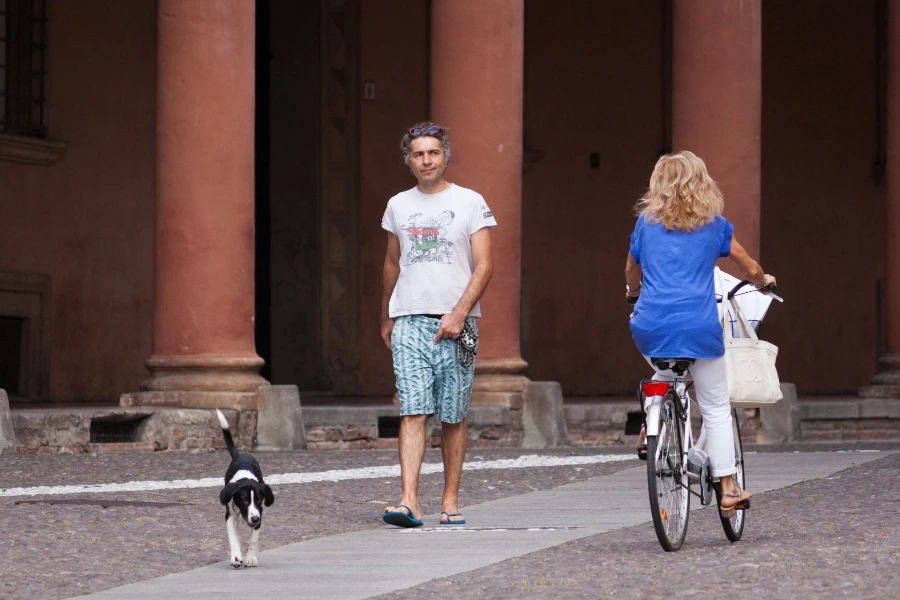
12. Residents of Bologna only appear on the streets, to walk the dog or ride a bike.
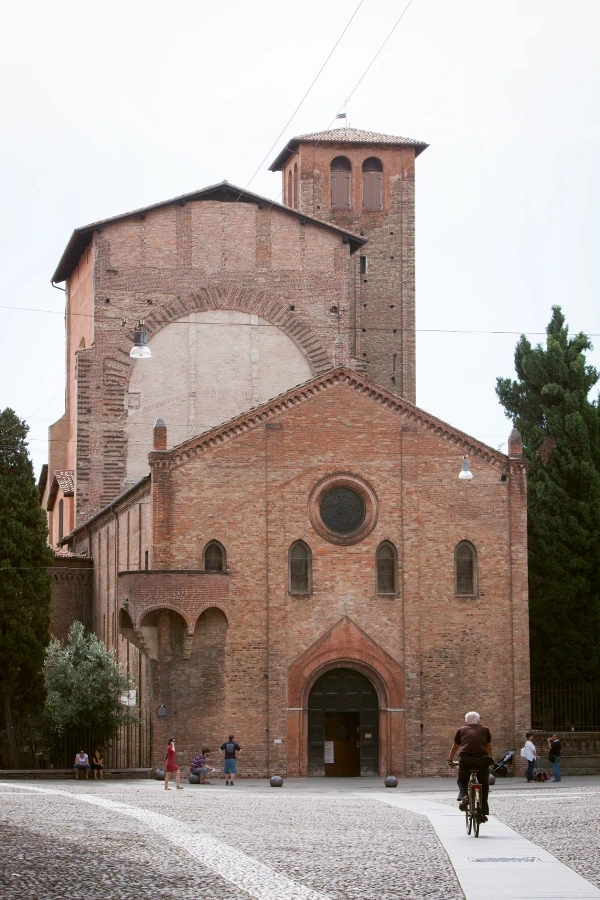
13. I get to the complex of Santo Stefano (Santo Stefano), which consists of the 7 ancient and executed in the Romanesque churches.
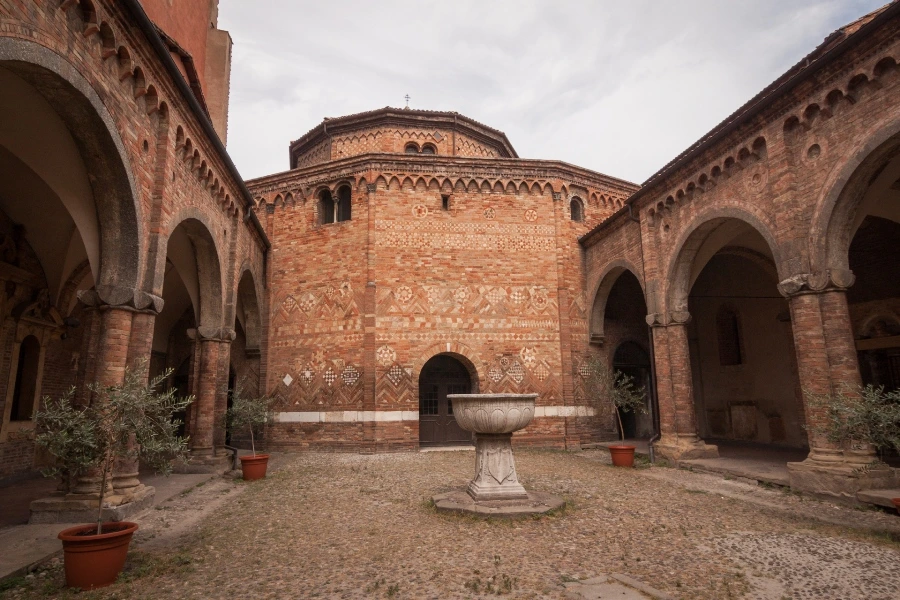
14. The complex follows the complex components of their holy places in Jerusalem. For example, so-called courtyard of Pilate - cortile di Pilato. In the center stands a bowl, symbolizing the one in which to wash hands procurator of Judea.
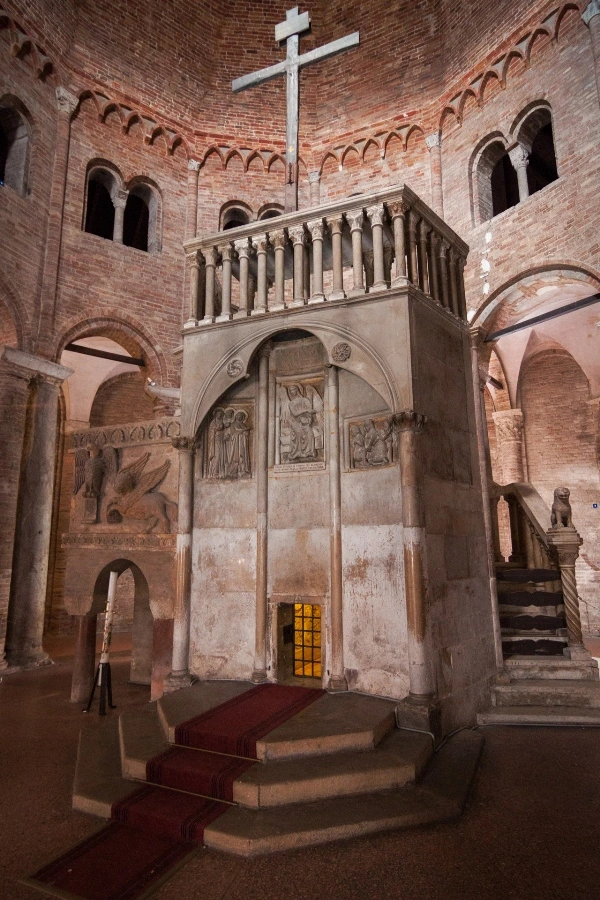
15. The oldest building of Santo Stefano - Holy Sepulcher. Poseredne is edikola where previously contained the relics of the founder of the place - St. Petronius, but now they peremeschny in the main cathedral of Bologna.
This part of Santo Stefano made a strong impression on me both for its simplicity and lack of any decoration, and how it I have met. When I walked into this gloomy church, there was no one, and was quiet, which is broken only by the singing from the nearby church. Suddenly, from somewhere came a dove, and the noise got on very cross.
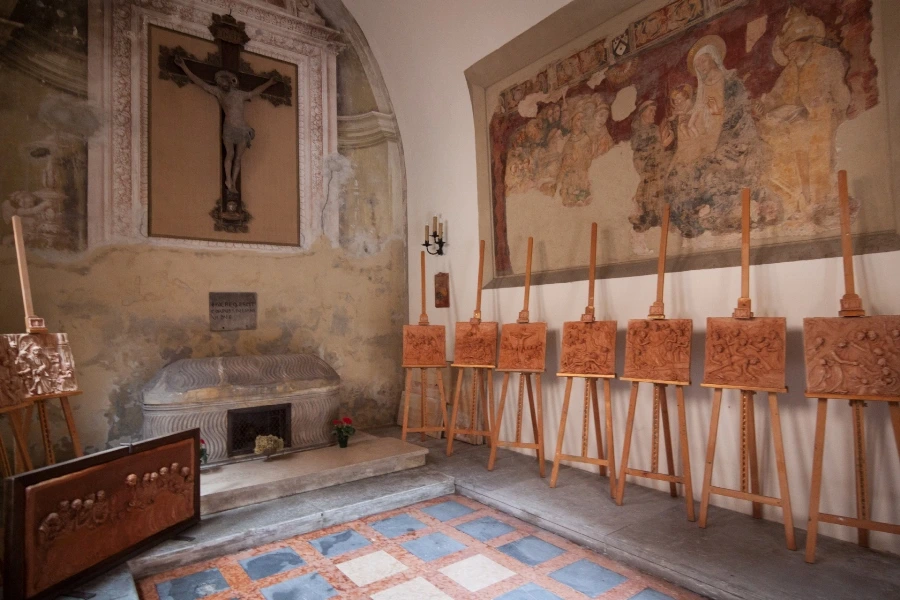
16.
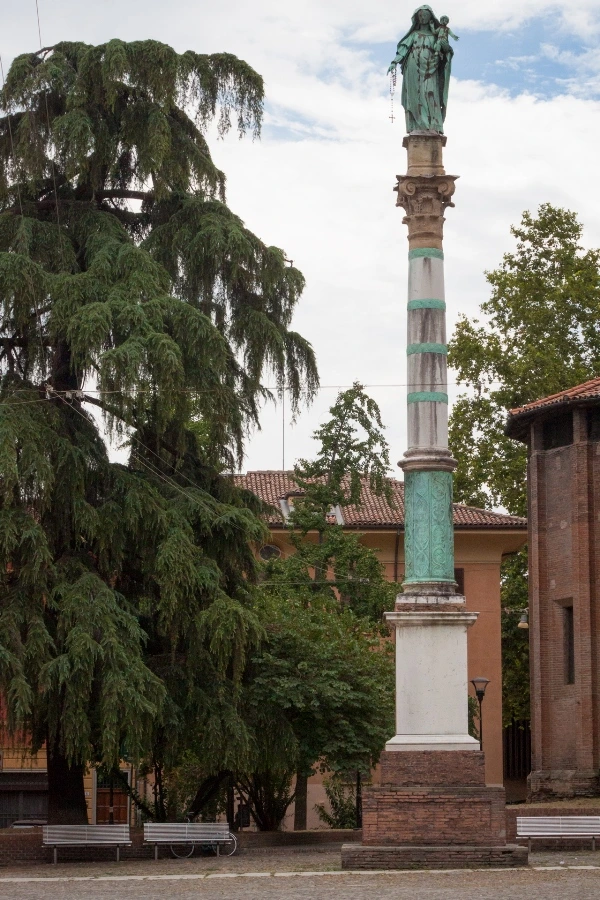
17. I continue the way through the capital of the Emilia Romagna region.
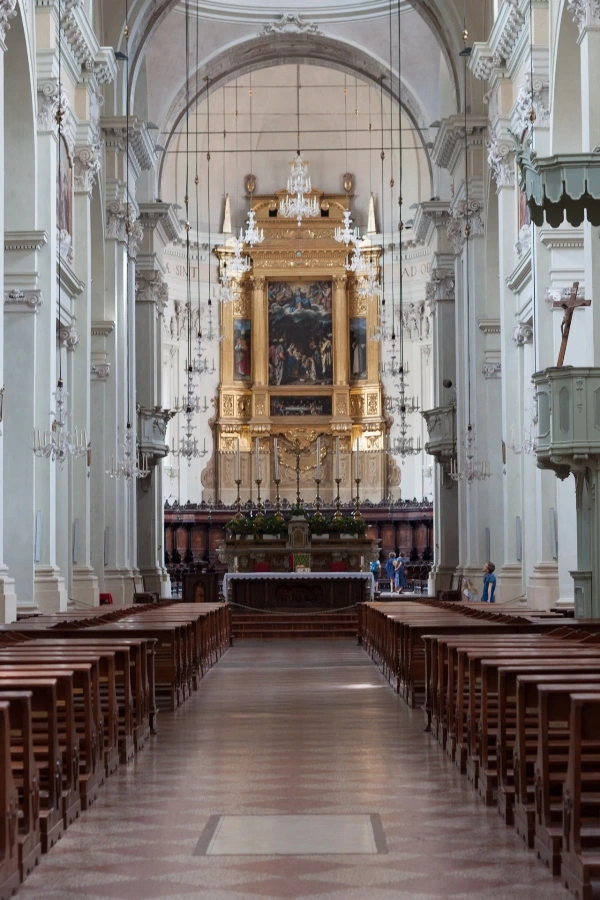
18. I go inside the Basilica of San Domenico, which is curious for two things. Firstly, there is a body in which Mozart was training in preparation for the exam in the Accademia Filarmonica di Bologna.
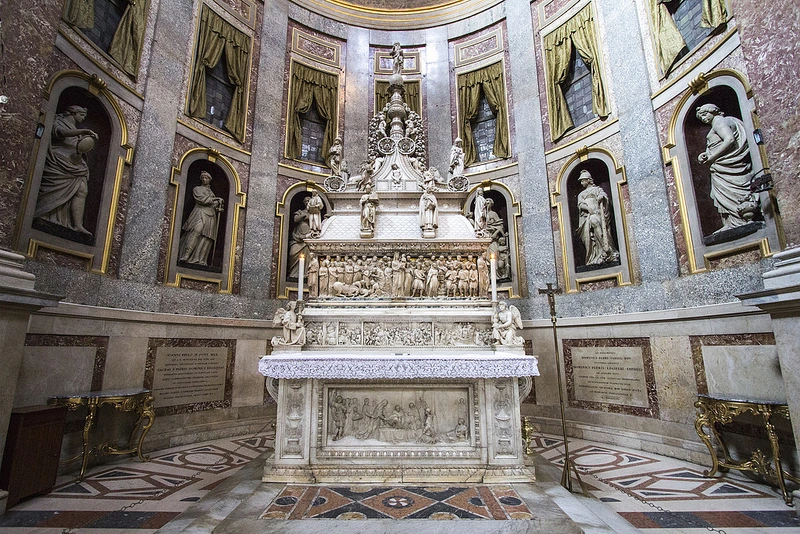
(Photo not mine, because it is forbidden to shoot in the chapel)
19. Secondly, this temple is famous Arch of St. Dominic - a group of sculptures, uvenchivayushih cancer with the relics of the saint. Work began on the monument Nicolò Pisano and several statues made the 20-year-old Michelangelo. Despite the beauty of the work, I was unpleasantly surprised attitude of employees of the church. At the entrance to the chapel landmark me very, very persistently asked to leave a donation. In my opinion, it would be better done at once the entrance fee. I do not think that someone would have spare money.
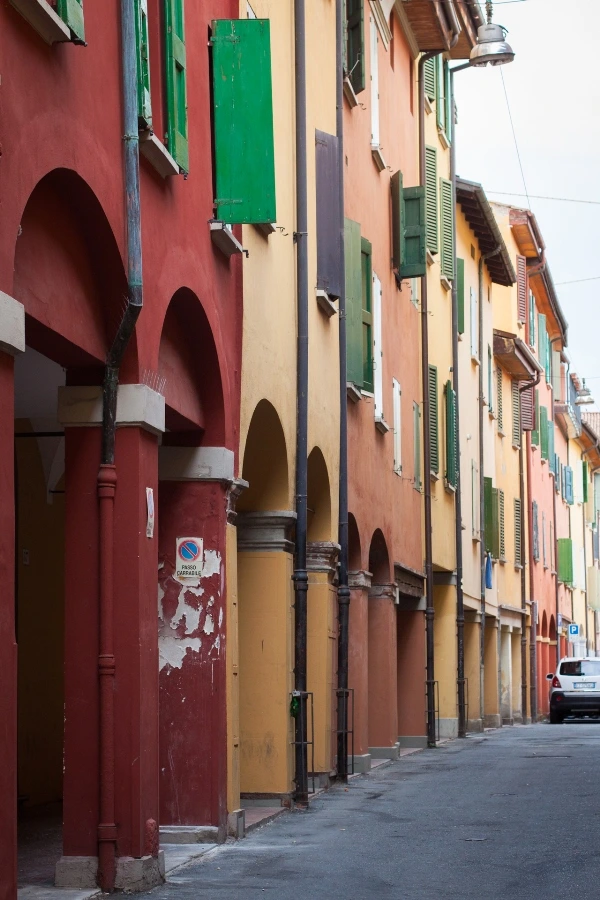
20. The city is famous for one more thing - the endless arches. The center of Bologna is difficult to find a house that would not have an attached porch. On the one hand, it is convenient and allows you to walk around the city without fear of rain. On the other, his head hanging over the narrow streets of the house and cause an unpleasant feeling as if you go on a long trade row.
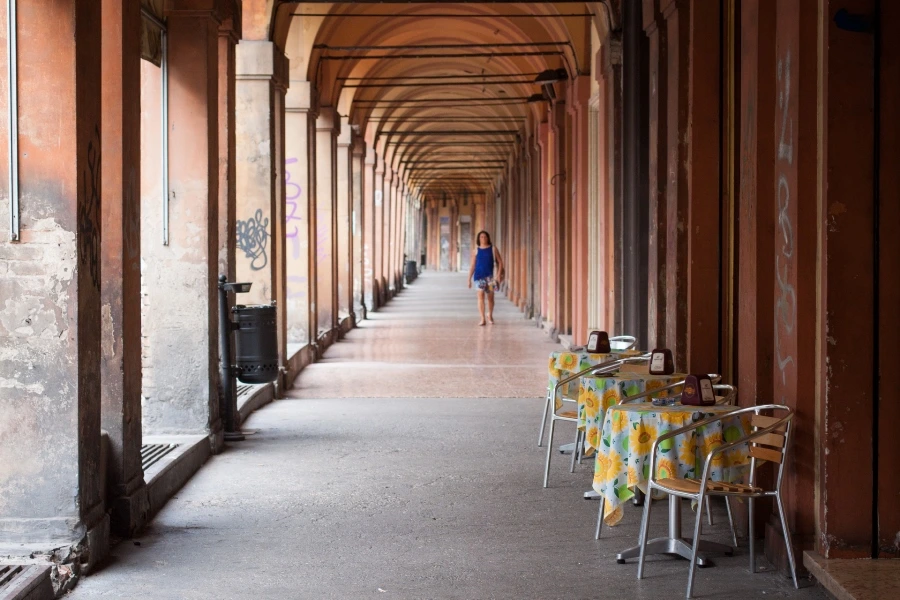
21. I do I go in the direction of the church of San Luca. It is located on a hill below the Bologna at 300 meters above sea level. According to legend, it contains an icon, which is written by the Apostle Luke. It is a shrine ... Guess what? That's right, the portico length of 3.7 km, which consists of 666 arches. Its built in the XVII century to shelter pilgrims from the rain.
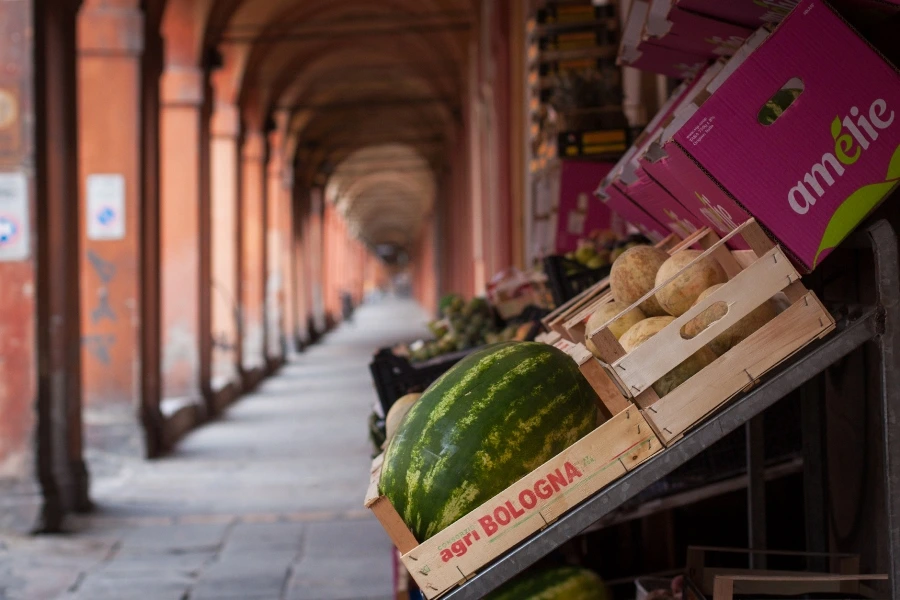
22. Part of the portico runs along the street Via Sagarozza and is unattractive sight. Graffiti spray-painted walls and bored sellers stores look uninviting to the few passers-by.
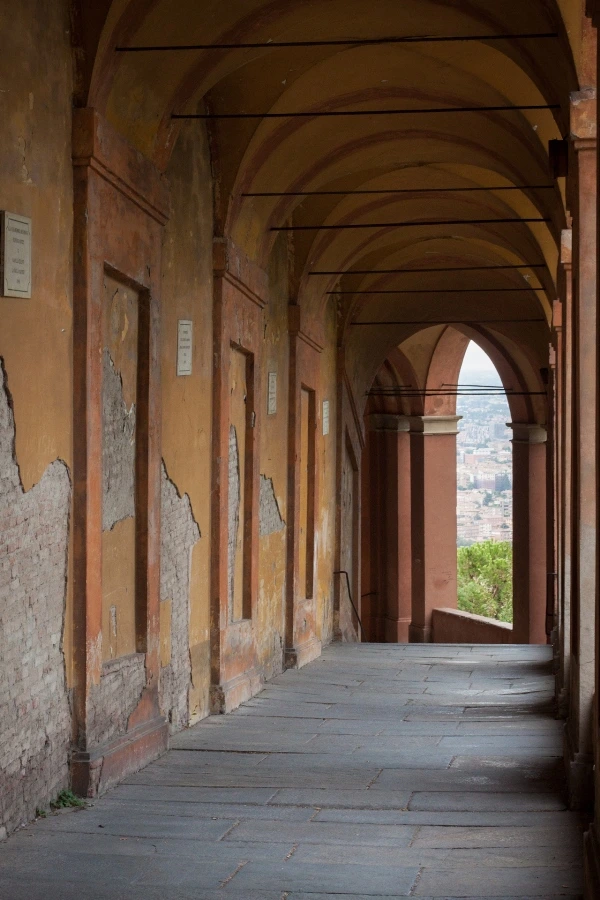
23. The second part of the corridor goes uphill, and food stalls are replaced by small chapels. Climbing is more complicated than I thought - partly because of the heat, partly because of the two bottles of water in a backpack, which in hindsight I bought in the store. Gallery, incidentally, is actively used to run the locals and seems obsessed with the rise with less difficulty than I did.
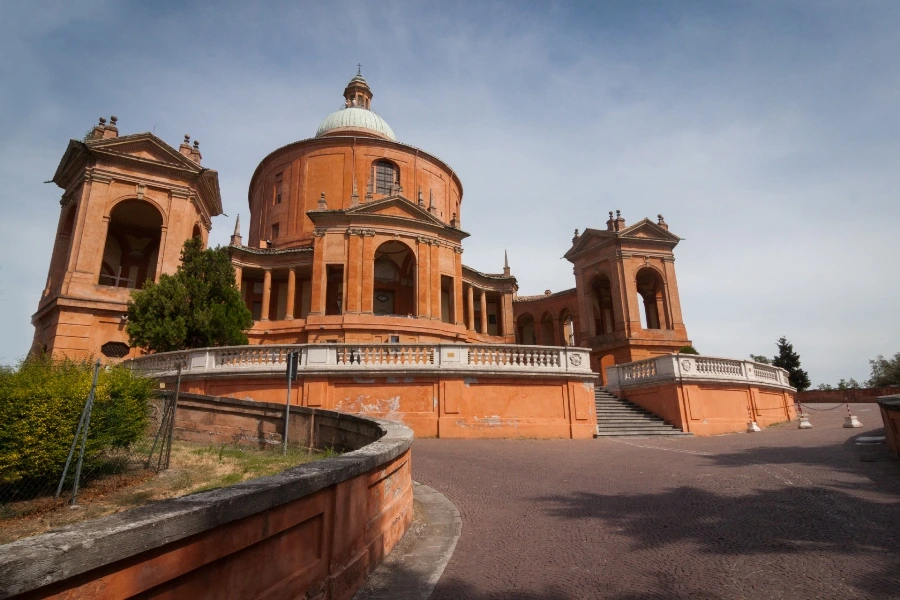
24. Finally, the endless arcade game comes to an end, and in front of me there is the impressive size of the building of the temple.
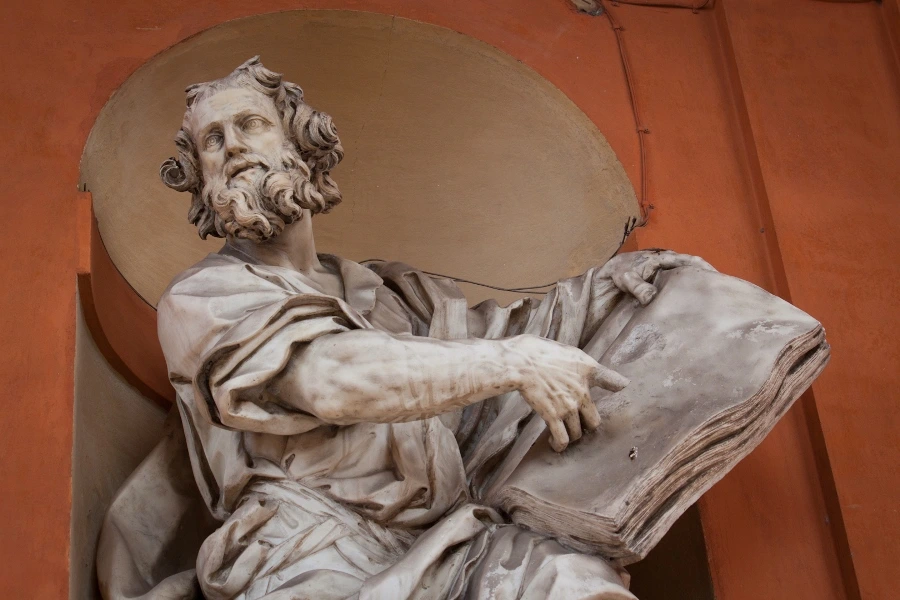
25. I had to wait half an hour for the San Luca opened to see the famous icon of the Virgin. (Photos not, because inside I did not take off). In this shrine are several legends associated. For one, this relic from Constantinople brought pilgrims who handed it to the Hagia Sophia, indicating deliver to Sentry Hill, as it was written on the image of the Virgin. The man went to find the right place in Rome, but there he was told that the hill with the correct name only eats s Bologna. The second story says that a solemn procession with the icon in the XV century stopped the incessant rains that threatened to destroy the harvest. Since then the believers in San Luca uvelichislsya only.
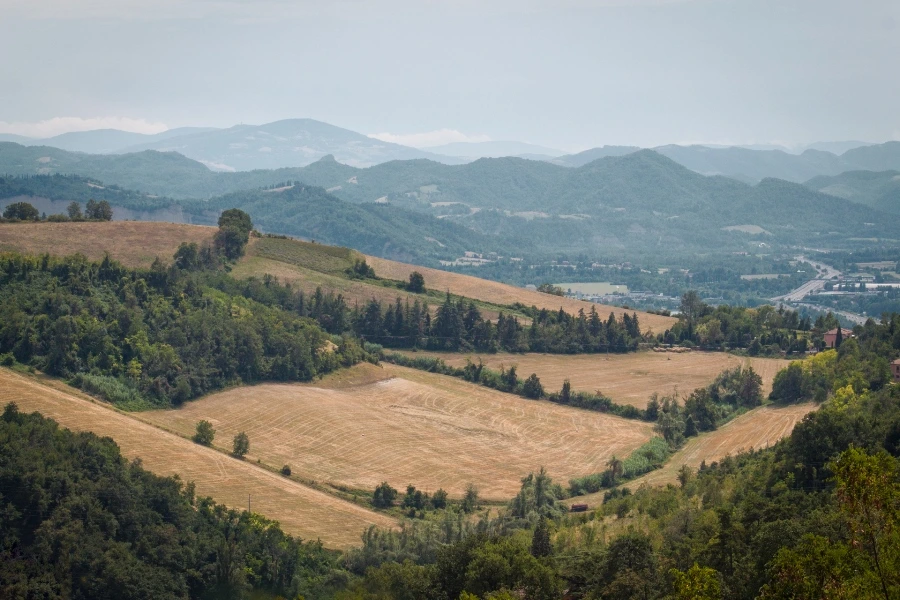
26. Mount peaceful views of the valley of Emilia-Romagna, which differ from the neighboring Tuscany.
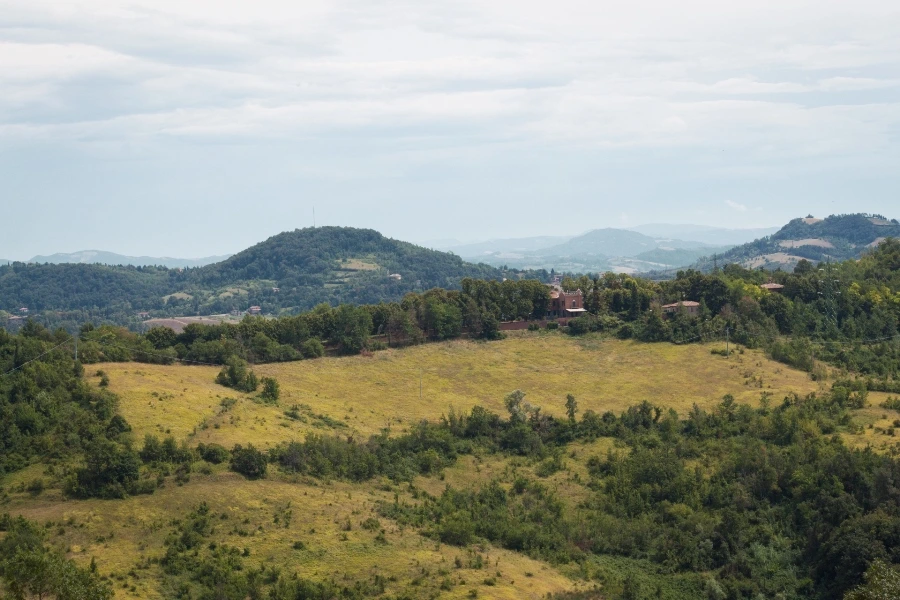
27. I can imagine what it was like to live here for a couple of monks centuries ago and in between prayers mezhlu contemplate such beauty.
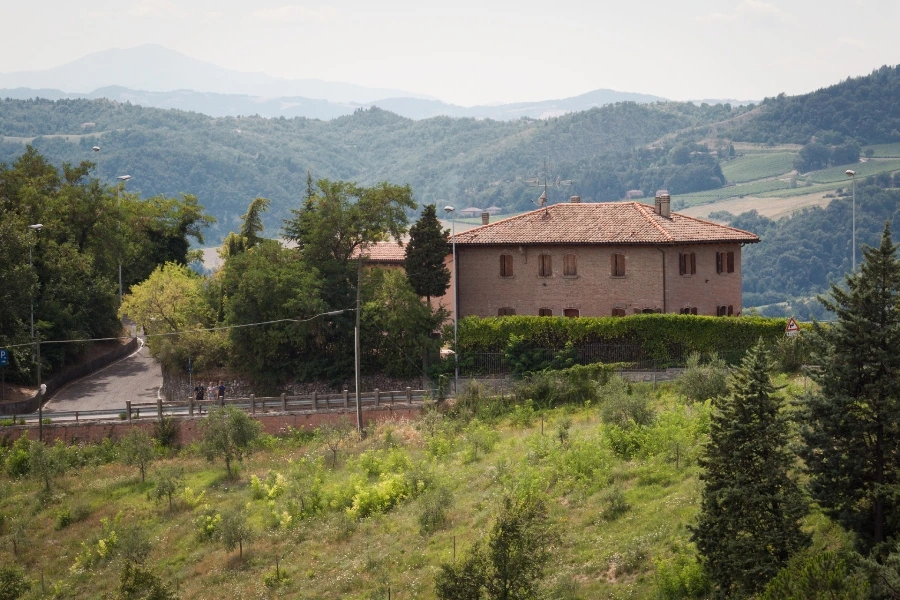
28.
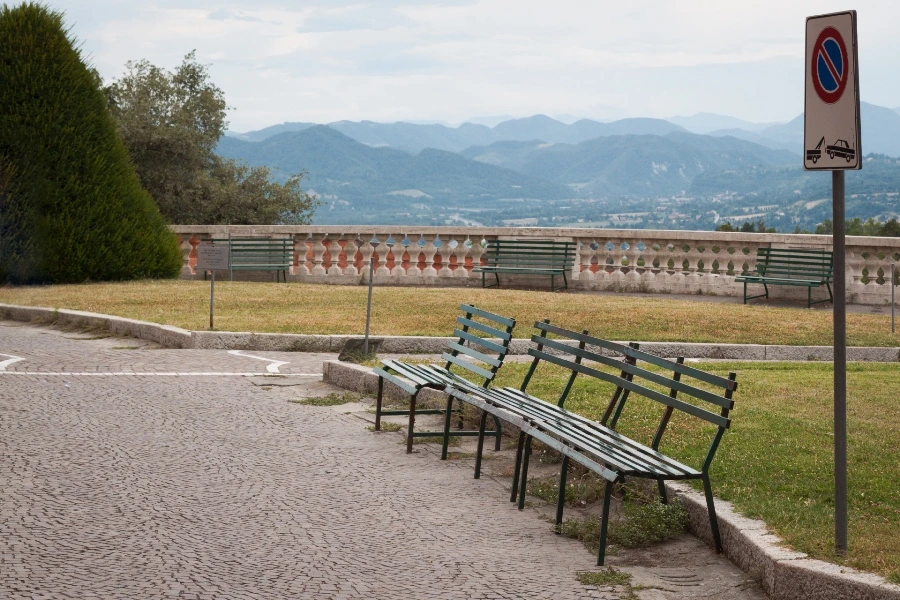
29. Sit on the bench - a pleasure.
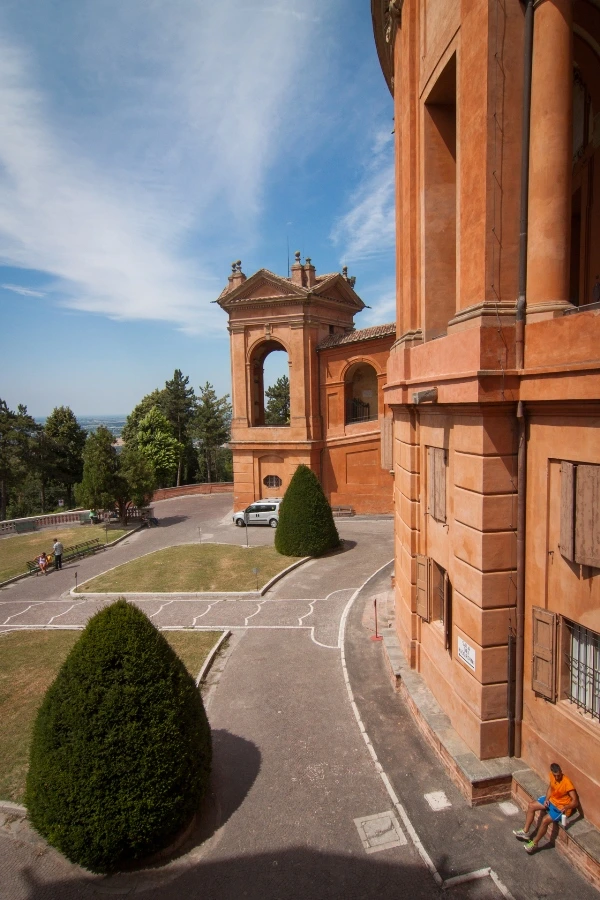
30.
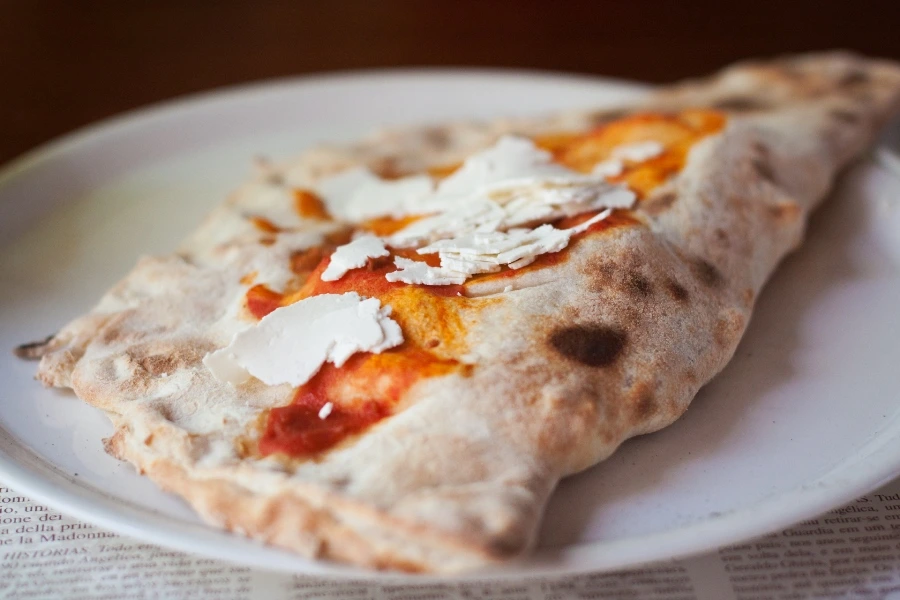
31. The long ascent makes me an appetite, so I go to a pizzeria near Vito San Luca on the hill. Half an hour later, the strength of pizza with ricotta, I was again ready to walk in Bologna. The restaurant, by the way, all sides can be heard speaking Russian, and I think that I'm nowhere in Italy is not seen as much Russian as in Bologna.
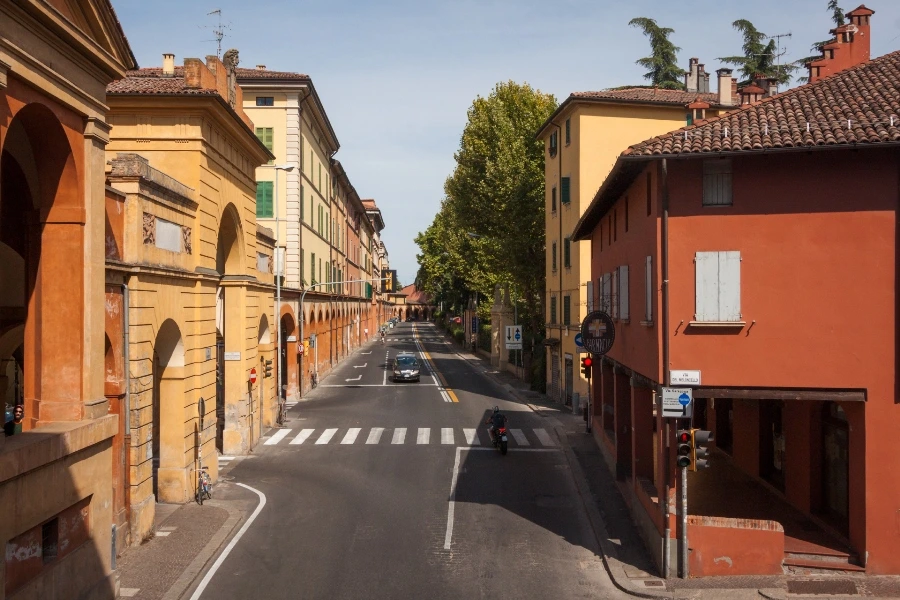
32. Via Saragozza, along which there is a portico.
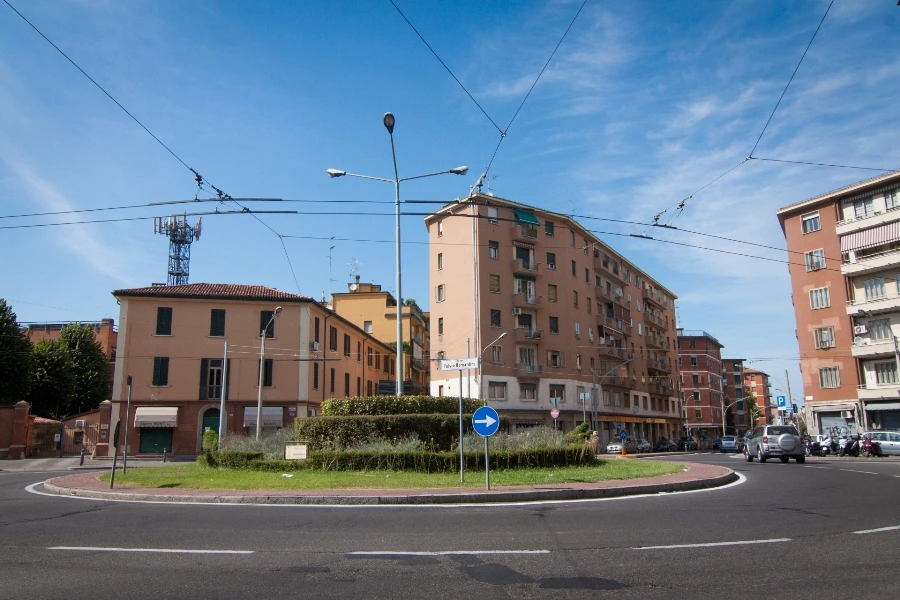
33. The road to the city center is unattractive for the modern area. Unlike Florence, where the house on the outskirts look cozy and welcoming residential area of Bologna and unpleasantly sharp contrast to the city center.
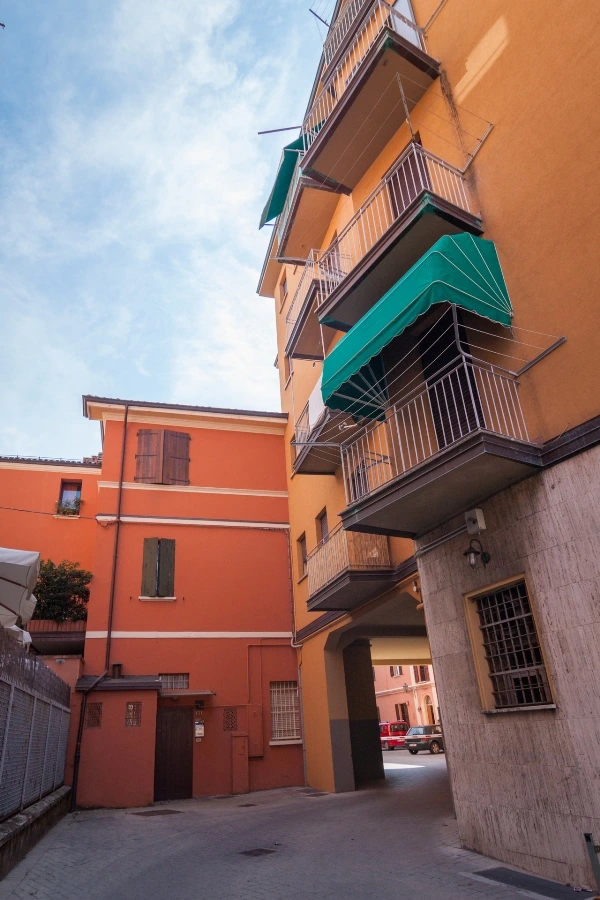
34.
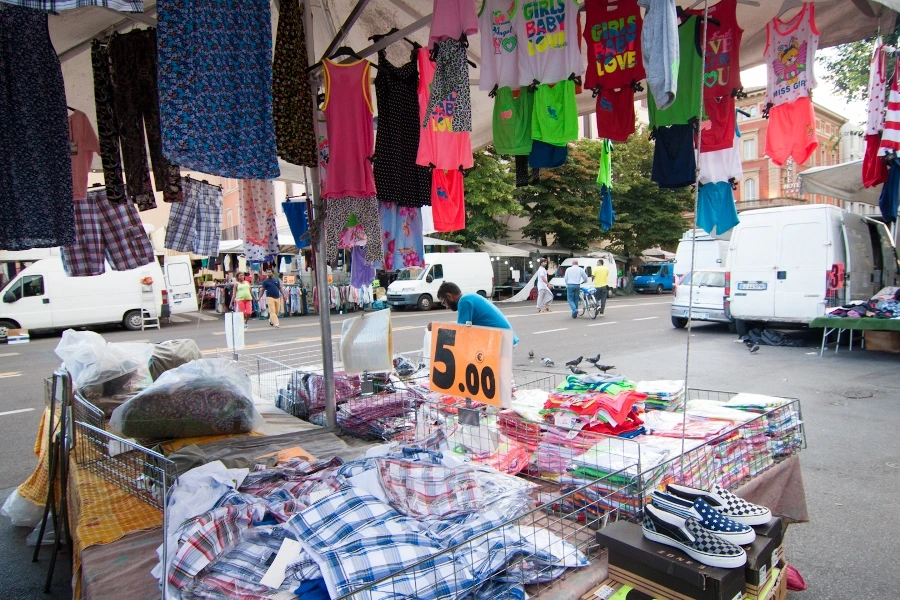
35. Even the bad news. In addition to the garbage on the streets and graffiti on the walls of Bologna I did not like this kind of markets. Mercato Cherchisone?
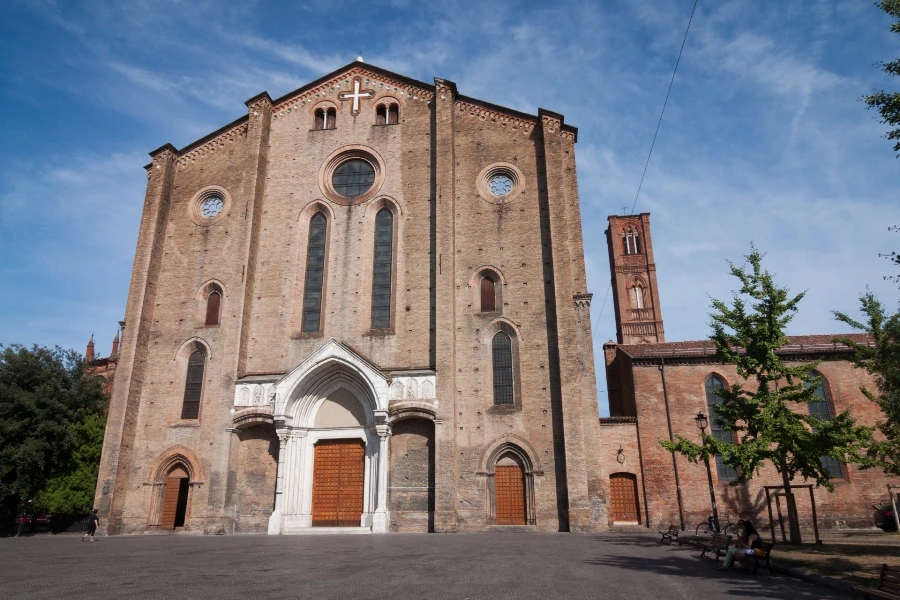
36. But do not let the bad news and go back to the old Bologna.
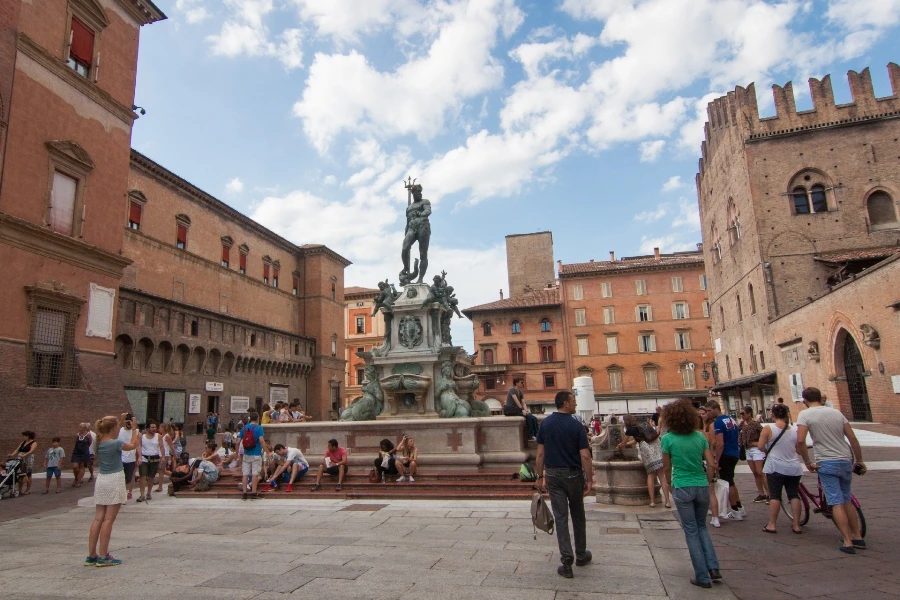
37. That the famous Neptune Fountain, the statue for which the famous Florentine master of Giambologna. Right - a fountain with water, for what to it even formed a queue.
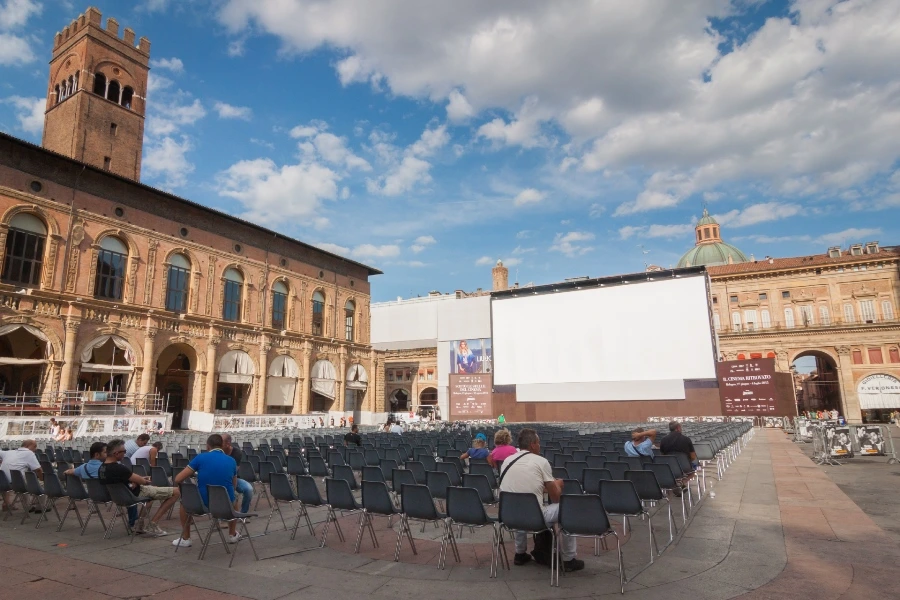
38. A little further on we see an outdoor movie theater on the square, a popular entertainment italyatsev summer. Left - the Palazzo del Podesta (Palazzo del Podestà), the creation of which is attached bolonets Aristotle Fioravanti, later built the Assumption Cathedral in the Moscow Kremlin.
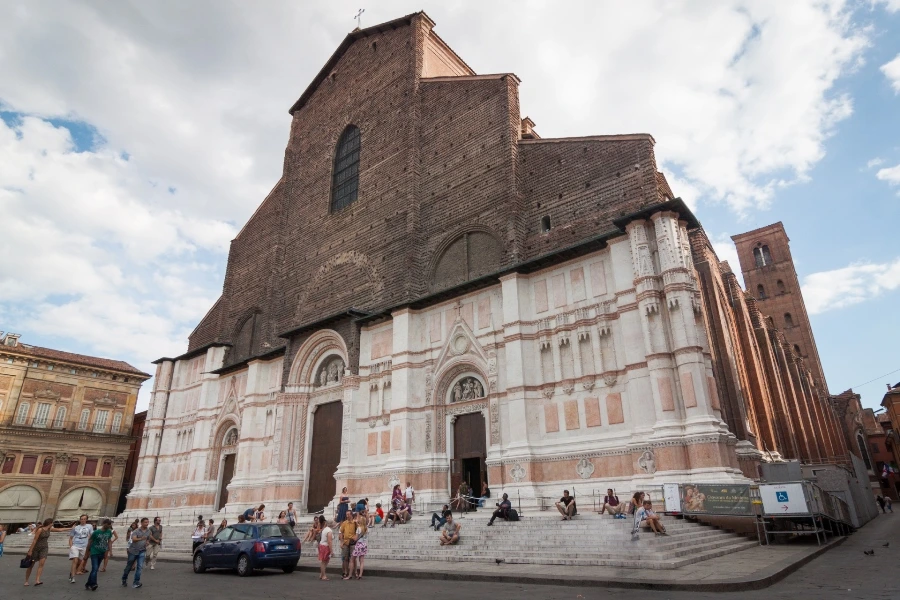
39. Directly opposite stands the Basilica of San Petronio, Bologna Duomo, the main cathedral of the city. For its size it is the sixth church in Europe and the fourth in Italy. Cathedral of San Petronio is known as one rather controversial work of art. It is a medieval fresco by Giovanni di Modena, depicting the Last Judgment. Inspired by the "Divine Comedy," the artist has placed the Prophet Mohammed in Hell. In 2002 and 2006, he was arrested radical Islamists who planned the attack against the offensive mural, and in winter 2015, after the tragedy in the wording of Charlie Hebdo, Bologna authorities tightened security at the entrance to the cathedral.
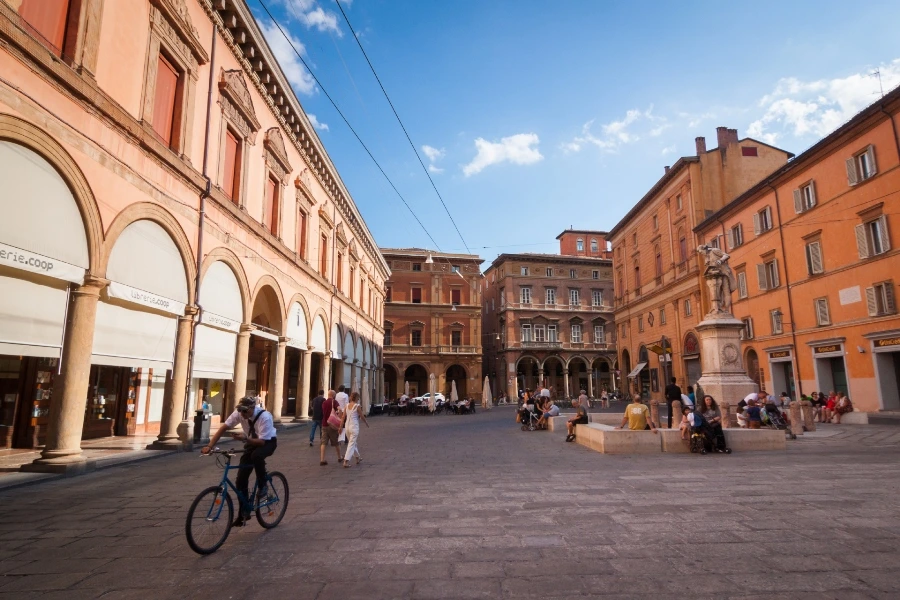
40.
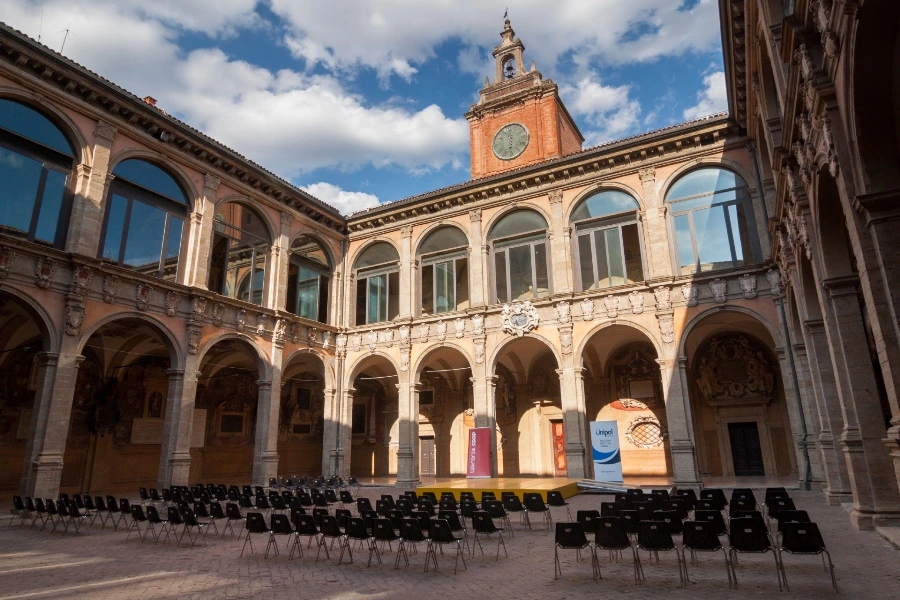
41. I though briefly, but could not drop into the old building of the University of Bologna, the so-called Arhigimnaziyu, which until 1803 studied local students. So patio she meets me.
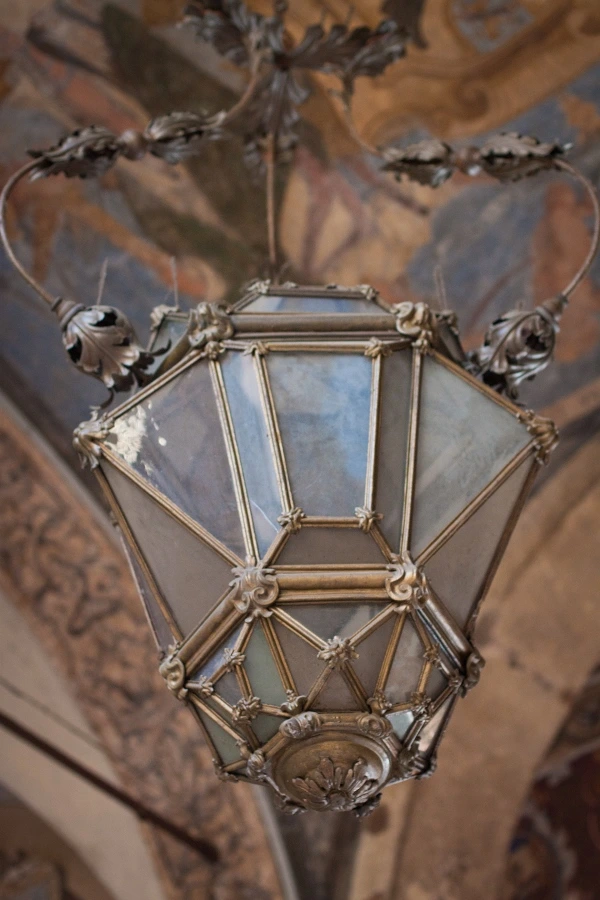
42. Unfortunately, I have little time left and I do not have time to see the Anatomical Theatre and the Assembly Hall - the most interesting to visit the room Arhigimnazii.
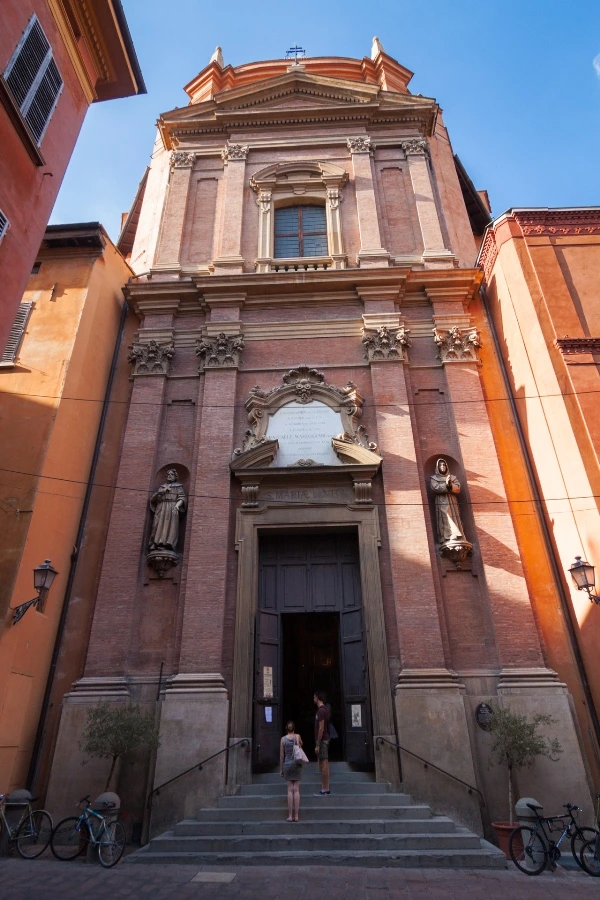
43. The last on my itinerary was listed church of Santa Maria case Vita (Santa Maria della Vita) with its unsightly facade, lost among the neighboring houses.
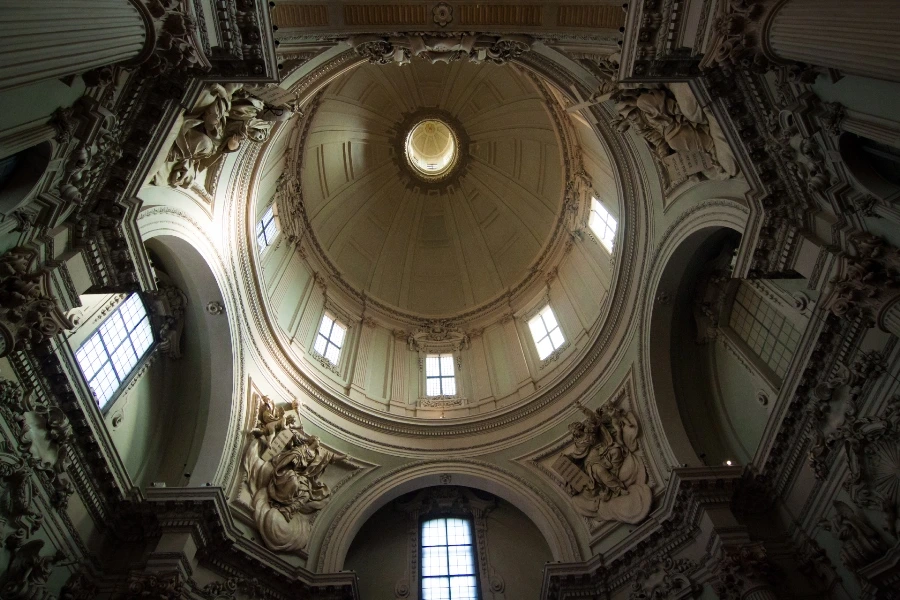
44. Inside the church amazes its baroque decorations, which in this case looks harmonious and uncluttered.
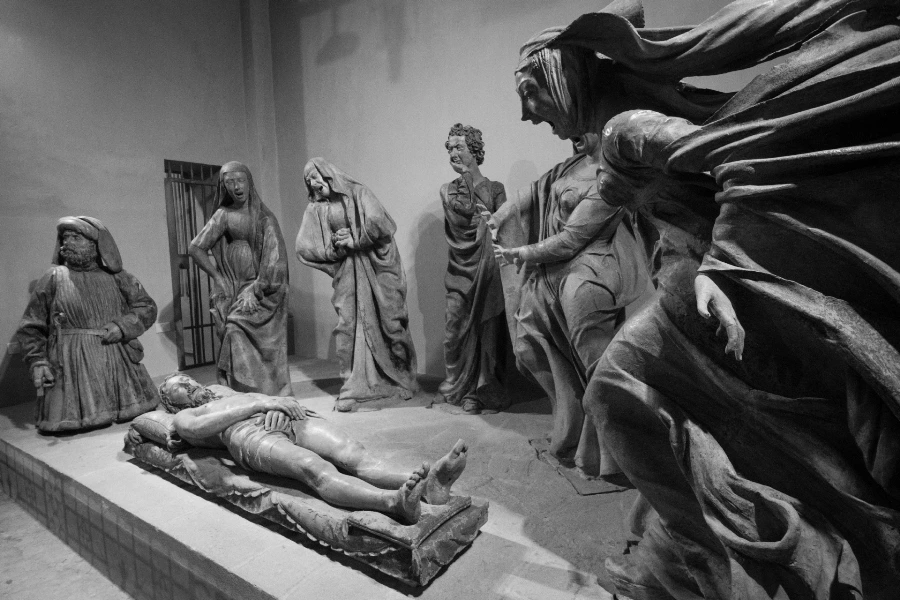
45. Pearl Cathedral - terracotta group "Lamentation" Niccolo del Arca, created in the XV century. Rare to find such emotion in a sculpture, a movement and a liveliness. Each wrinkle heroes, every curve of the body, every fold of clothing conveys the pain of those who mourn Jesus.
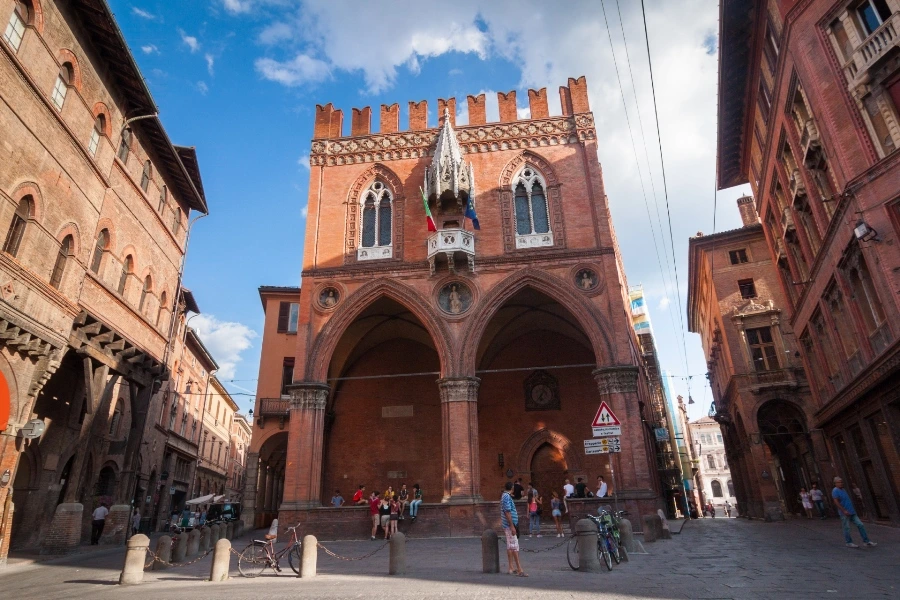
46. However, as time wore on, and I leave Bologna, an ancient and interesting city in which to live, however, I would not want to.

